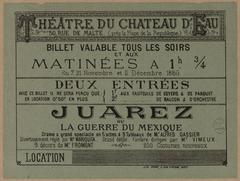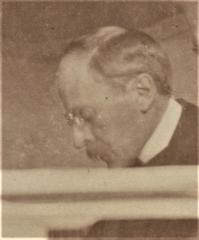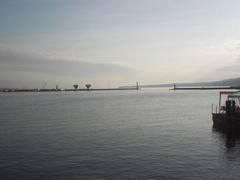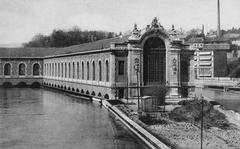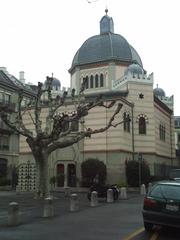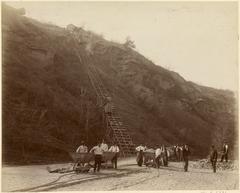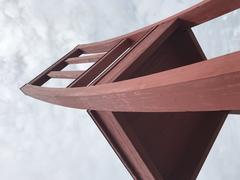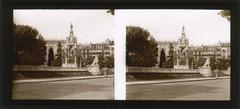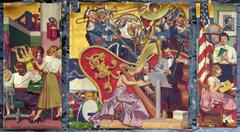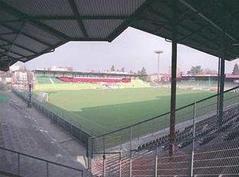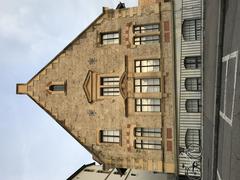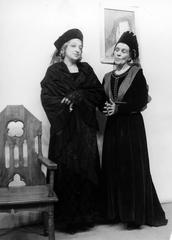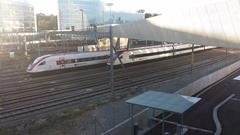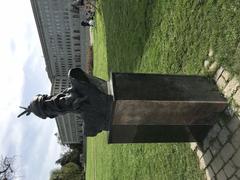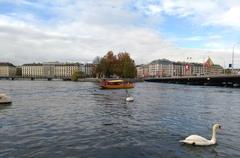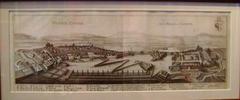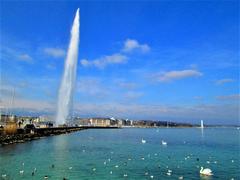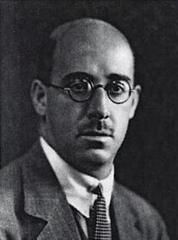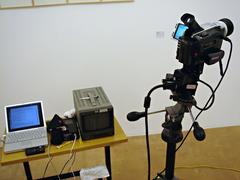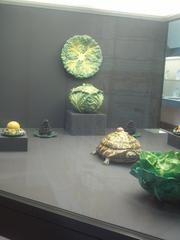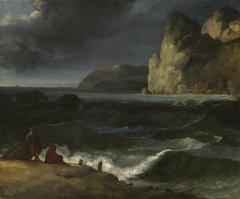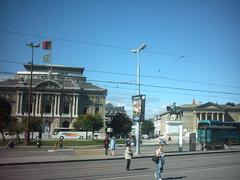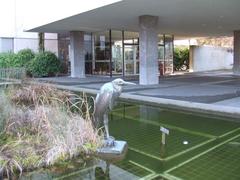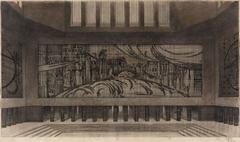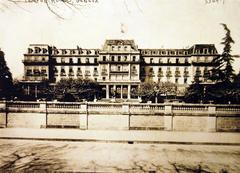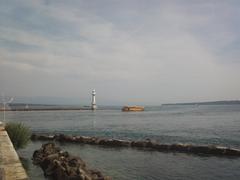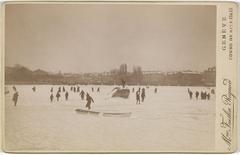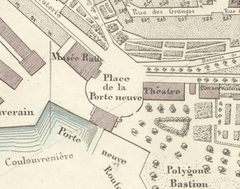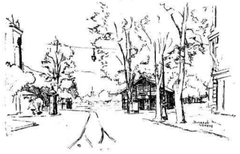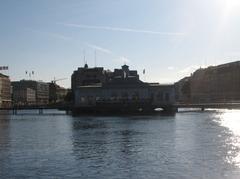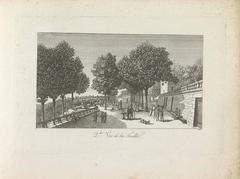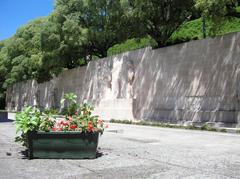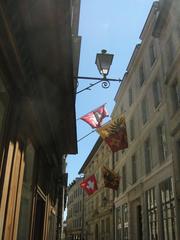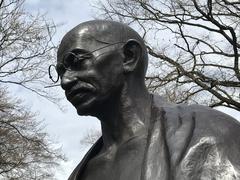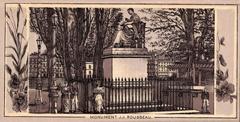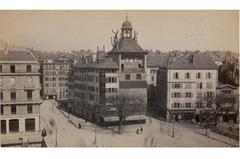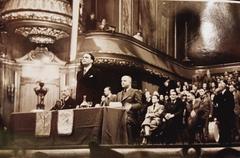Musée du Petit Palais Geneva: Visiting Hours, Tickets, and Historical Significance
Date: 14/06/2025
Introduction
Located in the heart of Geneva, the Musée du Petit Palais is an emblem of visionary collecting and modern art appreciation. Established in 1968 by Oscar Ghez, a Swiss industrialist of Tunisian-Jewish descent, it broke away from traditional museum standards by celebrating both acclaimed masters and overlooked talents—including pioneering women artists. Though its doors closed permanently in 1998, the Petit Palais’s remarkable collection continues to captivate audiences worldwide through traveling exhibitions, most notably the 2025 “Trésors du Petit Palais de Genève” at the Fondation de l’Hermitage in Lausanne. This guide provides detailed historical context, essential visiting information, exhibition highlights, and practical tips for making the most of your cultural experience (Wikipedia; Fondation de l’Hermitage).
Table of Contents
- Historical Overview
- Visiting the Petit Palais Collection
- Recent and Upcoming Exhibitions
- Educational and Inclusive Initiatives
- Digital Presence and Collection Management
- Frequently Asked Questions (FAQ)
- Visuals and Media Resources
- References
Historical Overview
Origins and Foundation
Oscar Ghez founded the Musée du Petit Palais in 1968, inspired by his passion for modern painting and a drive to showcase works often neglected by mainstream institutions. The museum’s home was a striking Second Empire-style mansion, originally constructed in 1862 by architect Samuel Darier on Terrasse Saint-Victor, whose ornate façade overlooks Geneva’s historic Old Town (Wikipedia).
Ghez envisioned a museum dedicated to Impressionism, Post-Impressionism, and the École de Paris, covering 1870–1930—a bold move in a city where such art was then rare (Bilan).
Architectural Evolution
Significant renovations in 1967 expanded the building from two to six floors, including three subterranean levels. These works revealed remnants of Geneva’s ancient city walls, further enhancing the site’s historical intrigue. Eclectic interior features such as a wrought-iron gate shaped like a spider web and exhibition spaces carved into city fortifications made the Petit Palais an architectural curiosity (Bilan).
Collection: Scope and Distinction
By its opening, Ghez had amassed thousands of works, often acquiring entire studios from early 20th-century artists. The collection is notable for its inclusivity, featuring masterpieces by Manet, Renoir, and Caillebotte, alongside lesser-known artists and pioneering women such as Marie Bracquemond, Tamara de Lempicka, and Suzanne Valadon (Fondation de l’Hermitage).
This progressive philosophy fostered diversity, embracing Impressionism, Post-Impressionism, Neo-Impressionism, Fauvism, Cubism, and Naïve Art (Le Temps).
Cultural Impact and Legacy
The Petit Palais was Geneva’s second private museum, quickly becoming an essential destination for art lovers and tourists. Its exuberant exhibitions, often hung in ornate frames, made modern art accessible to a broader public. After Oscar Ghez’s death in 1998, the museum closed. The Association des Amis du Petit Palais now manages the collection, presenting it in temporary exhibitions in Switzerland and abroad (Wikipedia).
Notable Artists and Works
The collection’s highlights include:
- Édouard Manet and Auguste Renoir: Foundations of Impressionism.
- Gustave Caillebotte: Including “Le Pont de l’Europe” (1876).
- Théophile-Alexandre Steinlen: Famed for Parisian scenes and feline subjects.
- Tamara de Lempicka and Suzanne Valadon: Leading women artists.
- Charles Angrand, Maximilien Luce, and Louis Valtat: Key representatives of Neo- and Post-Impressionism (Fondation de l’Hermitage).
Visiting the Petit Palais Collection
Exhibition Locations and Hours
The Petit Palais in Geneva remains permanently closed; however, its collection is regularly presented in international exhibitions. The major 2025 exhibition, “Trésors du Petit Palais de Genève,” is held at the Fondation de l’Hermitage in Lausanne (Tempslibre.ch):
- Venue: Fondation de l’Hermitage, Rte du Signal 2, 1000 Lausanne
- Exhibition Dates: 24 January – 1 June 2025
- Opening Hours: Mon–Sun 10:00–18:00; Thursdays until 21:00
Ticketing and Accessibility
- Tickets: Adults CHF 22; AVS/AI CHF 18; Students/Youth (10–17) CHF 10 (Tempslibre.ch)
- Advance Booking: Strongly recommended, especially for weekends and holidays.
- Accessibility: The Fondation de l’Hermitage is wheelchair accessible and offers guided tours, educational workshops, and facilities for visitors with disabilities (Fondation de l’Hermitage PDF).
Getting There and Nearby Attractions
Lausanne is a short direct train ride (35–40 minutes) from Geneva. From Lausanne’s main station, take bus lines 16 or 60 or a taxi to the museum. The venue is set in a scenic park overlooking the city. While in Lausanne, visit the Lausanne Cathedral, Château Saint-Maire, and the Olympic Museum.
Recent and Upcoming Exhibitions
2025 Exhibition at Fondation de l’Hermitage
The “Trésors du Petit Palais de Genève” exhibition brings together 136 works, focusing on Impressionism, Post-Impressionism, and early Modernism. Thematic sections address the evolution of European painting, the rise of women artists, and the legacy of private collectors like Oscar Ghez (Fondation de l’Hermitage; Tempslibre.ch).
Highlights
- Paintings by Manet, Renoir, and Caillebotte
- Works by Valadon, de Lempicka, Bracquemond
- Urban landscapes, portraits, and genre scenes reflecting the diversity of the collection
Special Programming
- Guided thematic tours (French/English)
- Educational family workshops
- Concerts and cultural events in the gardens (Tempslibre.ch)
Educational and Inclusive Initiatives
The museum and its partner institutions promote inclusivity through accessible programming, workshops for children, and guided tours for visitors with special needs. Initiatives include tactile and audio-described tours for visually impaired guests and collaborative art projects inspired by the collection (Fondation de l’Hermitage PDF).
Digital Presence and Collection Management
The Association des Amis du Petit Palais oversees the preservation and promotion of the collection. Digital access is available through platforms like Wikimedia Commons and the Art History Project, offering global audiences a virtual experience of the highlights (Art History Project).
Frequently Asked Questions (FAQ)
Q: Is the Musée du Petit Palais in Geneva open?
A: The museum is permanently closed, but its collection is accessible via traveling exhibitions.
Q: How do I purchase tickets?
A: Tickets for the current exhibition are available through the hosting institution’s website (Fondation de l’Hermitage).
Q: Is the exhibition accessible to visitors with disabilities?
A: Yes, the Fondation de l’Hermitage provides full accessibility and adapted tours.
Q: Are guided tours available?
A: Guided tours are offered in French and English; advance booking is recommended.
Q: Can I take photos?
A: Non-flash photography is generally permitted, but always confirm at the venue.
Visuals and Media Resources
- Alt text suggestions:
- “Exterior view of the Musée du Petit Palais Geneva, with its ornate Second Empire façade.”
- “Gustave Caillebotte’s ‘Le Pont de l’Europe’ painting.”
- “Children participating in an educational workshop at the exhibition.”
- “Map showing locations of the Petit Palais in Geneva and Fondation de l’Hermitage in Lausanne.”
For virtual previews and exhibition maps, visit the Fondation de l’Hermitage website.
Plan Your Visit and Stay Connected
- Advance tickets: Purchase online to guarantee entry.
- Travel: Use public transport for convenience between Geneva and Lausanne.
- Stay informed: Download the Audiala app for exhibition updates, guided audio content, and more.
- Explore further: Combine your visit with nearby attractions to enrich your cultural itinerary.
References and Further Reading
The Musée du Petit Palais Geneva stands as a lasting tribute to the vision of Oscar Ghez, offering a collection that bridges the celebrated and the forgotten, the canonical and the innovative. Although its physical galleries are presently closed, its spirit endures—both through international exhibitions and as a beacon of inclusivity and art historical discovery.
